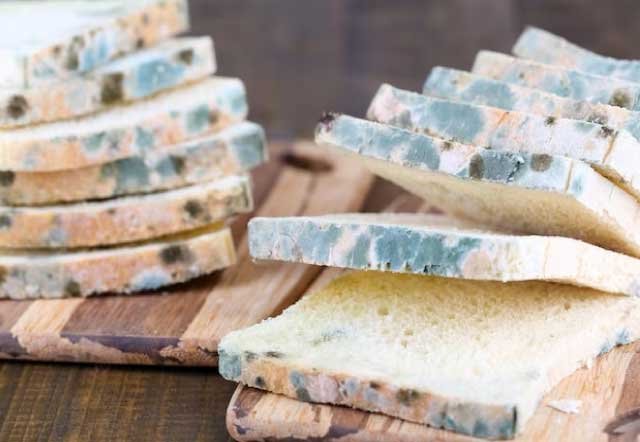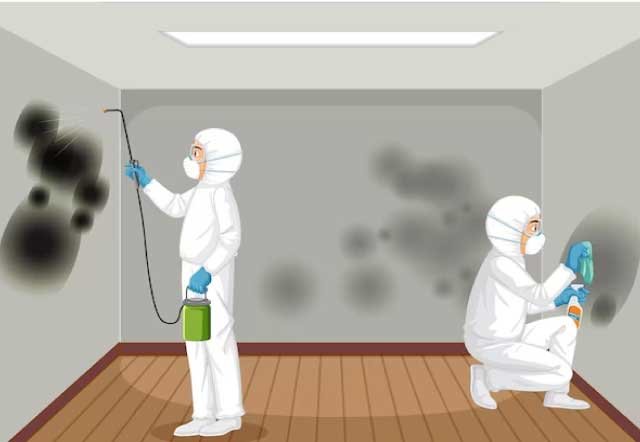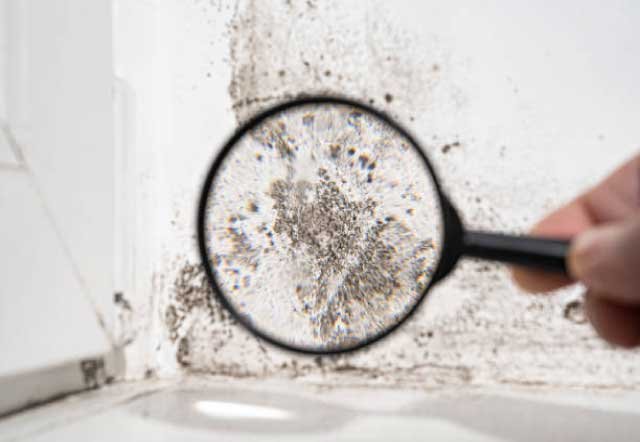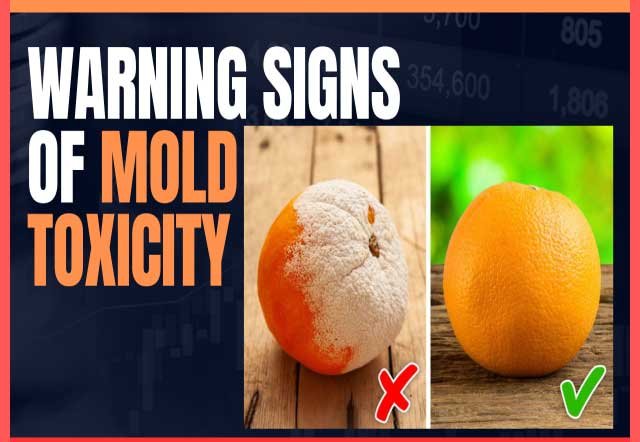10 warning signs of mold toxicity, is something most people ignore that they shouldn’t. Mold may not be as attention-grabbing as other health concerns, but it’s a topic that deserves your attention. I’m really excited to talk to you today about something that can affect all of us, no matter where we’re from or what language we speak: mold. Yep, that’s right, mold can be a big problem, and it’s important to know the signs.
In this article, we’ll explore the “10 warning signs of mold toxicity.” So, grab a comfy seat, maybe a cup of tea, and let’s jump into the world of mold and how to spot the signs that it might be causing problems in your home.”
What Exactly is Mold?
Mold, in simple terms, is a kind of fungus. It’s not something you’d want as a roommate, but it can sneak into your living spaces without an invitation. Mold is tiny, and you can’t see it with the naked eye most of the time. It’s like that uninvited guest who hides in the shadows!
But here’s the thing about mold: it loves to grow in damp, humid places. Whether it’s your bathroom, basement, or even your kitchen, if there’s moisture, mold can set up camp there. It’s like a moisture-loving ninja!
Mold comes in various colors, from green and black to even pink. It’s not picky about the shades it chooses, but it’s not an art lover; it’s a health hazard we need to be wary of.
So, now that we’ve got a basic idea of what mold is, let’s dig deeper into the 10 warning signs of mold toxicity. But before we do that, make sure you’ve got your detective hat on because spotting mold isn’t always easy!
Is Mold Dangerous?

Mold may seem like an unassuming intruder, but it packs a punch when it comes to health risks. Picture it as a silent troublemaker lurking in your home, waiting to strike.
When mold sets up shop in your living space, it releases tiny spores into the air. These spores are like microscopic troublemakers, too small to see but capable of causing some big problems. Inhaling or coming into contact with these spores can be a game-changer for your health.
Now, here’s where things get serious. Mold toxicity isn’t just about sniffles and sneezes; it can lead to some pretty severe health issues. People with mold allergies might experience symptoms like itchy eyes, runny noses, and coughing. But that’s just the tip of the iceberg.
For some, mold exposure can trigger asthma attacks, and for others, it can lead to more chronic respiratory problems. It’s like mold is playing a not-so-funny prank on your lungs.
But wait, there’s more! Mold toxicity isn’t limited to your respiratory system. It can mess with your whole body, causing headaches, fatigue, and even skin rashes. It’s like mold has an all-access pass to wreak havoc on your well-being.
So, the next time you spot mold or suspect its presence, don’t take it lightly. Mold may seem like an unwelcome houseguest, but it’s more like an unwelcome health hazard. Now, let’s dive into the 10 warning signs of mold toxicity to help you stay one step ahead of this sneaky intruder!
Mold Myths
Mold comes with its fair share of myths, but it’s time to separate fact from fiction. Think of this as a little myth-busting session with your friendly neighborhood mold detective!
Myth #1: Mold Only Grows in Dirty Places Imagine you’re at a fancy party, and mold shows up uninvited. Mold doesn’t care if your home is spotless or a bit messy. It’s an equal-opportunity invader, ready to thrive wherever there’s moisture. So, don’t think you’re safe just because your house is tidy!
Myth #2: Mold is Harmless, It’s Just a Little Bit of Mold Oh, how wrong this myth is! Even a tiny bit of mold can spell trouble. Mold releases those pesky spores we mentioned earlier, and even a few can wreak havoc on your health. It’s like saying a single mosquito is harmless; it only takes one to ruin your night.
Myth #3: You Can Just Scrub Mold Away If only mold were that easy to get rid of! While cleaning helps, it doesn’t solve the underlying issue. Mold usually lurks in hidden nooks and crannies. Scrubbing the surface won’t make it magically disappear; you need to address the root cause, which is often excess moisture.
Myth #4: Mold is Always Visible Mold is like a master of disguise. It can hide behind walls, under carpets, and in your ductwork, where you can’t see it. Just because you can’t see it doesn’t mean it’s not there, plotting its takeover.
Myth #5: Mold Smells Bad, So You’ll Always Know It’s There Sure, mold can produce a musty odor, but it’s not a foolproof indicator. Sometimes, it’s too sneaky for you to notice the smell until it’s a full-blown invasion. So, don’t rely solely on your nose; keep an eye out for those other warning signs.
10 Warning Signs of Mold Toxicity
- Persistent Respiratory Issues: If you find yourself constantly battling coughs, sneezes, or wheezing that won’t go away, mold could be the culprit. Those tiny spores we mentioned earlier can irritate your respiratory system, causing ongoing discomfort.
- Unexplained Fatigue: Feeling tired all the time, even after a good night’s sleep? Mold toxicity might be sapping your energy. Mold can release mycotoxins that affect your body’s energy production, leaving you perpetually drained.
- Frequent Headaches: Those persistent headaches might not be due to stress alone. Mold exposure can trigger headaches, leaving you with a constant throb in your noggin.
- Watery Eyes and Irritated Skin: If your eyes are constantly watery, and your skin feels itchy, mold might be to blame. Mold spores can irritate your eyes and skin, causing discomfort that seems to have no end.
- Memory Problems and Brain Fog: Are you experiencing forgetfulness and difficulty concentrating? Mold toxins can affect your cognitive functions, leading to memory issues and that dreaded brain fog.
- Nosebleeds: Frequent nosebleeds can be a red flag for mold toxicity. Mold can irritate your nasal passages and even lead to nosebleeds in some cases.
- Digestive Issues: Mold toxins can mess with your digestive system, causing problems like nausea, diarrhea, and stomachaches. It’s like your stomach’s way of telling you something’s not right.
- Increased Allergies: If your allergies seem to be on overdrive, mold could be the instigator. Mold spores can exacerbate allergy symptoms and make you feel like you’re in a constant battle with your immune system.
- Joint Pain: Mold toxicity can lead to inflammation in your body, causing joint pain and discomfort. It’s like your joints are sounding the alarm that something’s amiss.
- Mood Swings and Depression: Mold can affect your mental health too. It can lead to mood swings, anxiety, and even depression. It’s like mold is messing with your emotional well-being.
Also see: 15 Foods To Eat That Helps You Live Over 100 Years
How to Detoxify After Mold Exposure
Alright, so you’ve discovered you’ve been living with mold, and now you’re itching to kick it to the curb. Here’s your detox game plan, mold-style!
1. Clear the Air: No, we’re not talking about your heated debates with mold. Invest in a good air purifier to filter out those pesky mold spores. It’s like giving your home a breath of fresh air, literally!
2. Fix Leaks ASAP: Mold loves moisture, so put your DIY hat on and tackle any leaks pronto! It’s like telling mold, “Hey, this house isn’t a waterpark!”
3. Clean with a Vengeance: Channel your inner cleaning warrior and scrub every nook and cranny. Use mold-killing cleaners and banish mold like it’s the villain in your cleaning saga.
4. Ditch the Moldy Stuff: Say goodbye to moldy belongings. If it’s beyond salvation, toss it out without hesitation. Think of it as mold’s eviction notice!
5. Boost Your Immune System: Mold is like a sneaky invader, so power up your immune system with a healthy diet rich in antioxidants and vitamins. Mold won’t stand a chance against your fortified defenses!
6. Hydrate, Hydrate, Hydrate: Water is your best buddy in the detox mission. It flushes toxins out of your system like a superhero saving the day.
7. Consider Supplements: Talk to your healthcare pro about supplements like activated charcoal or chlorella. They can help your body in its battle against mold.
8. Sauna Time: Sweating it out in a sauna isn’t just relaxing; it can help your body detoxify by getting rid of toxins through your skin. Plus, you can pretend you’re on a tropical vacation!
9. Get Some Fresh Air: Mold doesn’t like the great outdoors. Spend time outside to let your body breathe in mold-free air. Nature is your detox retreat!
10. Consult a Pro: If you suspect serious mold exposure, don’t be a lone wolf in this battle. Consult a mold remediation expert and a healthcare professional. Teamwork makes the dream work!
How Long Does It Take to Detoxify After Exposure?
So, you’ve embarked on the great mold detox adventure, but how long will it take to make a grand exit from the Moldywood show?
Detoxifying your body after mold exposure is a bit like planning a cross-country road trip. The journey can vary for each traveler, but there’s a general route to follow.
Week 1-2: The Quick Stopover In the initial weeks, you might notice some relief from the symptoms. It’s like when you hit the open road, and the excitement keeps you going for the first few days. You start feeling better as your body starts to clear out those mold toxins.
Week 3-4: The Steady Drive Around this time, you’re on the highway, cruising along. Most people experience a significant improvement in their symptoms. It’s like finding that perfect playlist to keep your spirits high during the long drive.
Month 2-3: The Scenic Route Just when you think you’ve seen it all, you hit the scenic route. Some lingering symptoms might pop up sporadically, like those unexpected detours on your journey. Don’t worry; it’s part of the process.
Months 4-6: The Home Stretch You’re on the homestretch now, but don’t let your guard down. It’s like approaching your final destination, but you still need to stay vigilant. Continue your detox routine, keep up with a healthy lifestyle, and consult your healthcare pro for guidance.
6 Months and Beyond: Destination Mold-Free By this time, most travelers have reached their mold-free destination. It’s like finally pulling into that picturesque coastal town you’ve been dreaming about. You’re feeling great, and mold is but a distant memory.
Remember, just like a road trip, your mold detox journey is unique. It depends on factors like the level of exposure and your body’s response. Stay patient, stay positive, and keep your eyes on the horizon – a mold-free future is within reach!
Mold Busters (Prevention and Solutions)

Now that we know the 10 warning signs of mold toxicity, we’ll arm you with the knowledge to prevent mold growth and kick existing mold to the curb – all with a sprinkle of humor!
1. Play Hard to Get (Prevention):
Mold loves attention, so don’t give it any! Keep moisture levels in check by fixing leaks promptly. Mold hates a dry spell.
2. Ventilate Like a Pro (Prevention):
Give your home a breath of fresh air, literally. Use exhaust fans in bathrooms and kitchens. It’s like giving mold an unwelcome breeze.
3. Dehumidifiers Are Your BFFs (Prevention):
Mold throws parties in humidity. Show it the door with a dehumidifier. It’s like sending mold to its own “dry” party in the desert.
4. Clean with Vinegar (Solution):
White vinegar is your mold’s worst enemy. Mix it with water and spray it on affected areas. Mold detests the smell of success (and vinegar).
5. Tea Tree Oil Magic (Solution):
Mold’s kryptonite is tea tree oil. Mix a few drops in water, and you’ve got yourself a mold-fighting potion. Plus, it smells better than mold!
6. Say Hello to Hydrogen Peroxide (Solution):
This household superhero kills mold on contact. Spray it, let it sit, and wipe away the evidence. Mold won’t even have time to pack its bags.
7. Scrub with Baking Soda (Solution):
Baking soda is your trusty sidekick against mold. Mix it with water to create a mold-fighting paste. It’s like mold’s worst nightmare in a scrub brush.
8. Seal the Cracks (Prevention):
Mold sneaks in through cracks and crevices. Seal them up tight, and you’ll have a mold-free fortress. Mold will be left scratching its invisible head.
9. Use Mold-Resistant Paint (Prevention):
Mold-resistant paint is like a force field for your walls. It’s like telling mold, “You can’t sit with us.”
10. Don’t Be a DIY Hero (Solution):
If mold has taken over, don’t attempt to conquer it solo. Call in the pros, the real Mold Busters, to save the day.
Now that you’re armed with these mold-busting tips, go forth and keep your home mold-free! Remember, a mold-free home is a happy home. Mold, on the other hand, can find a new place to crash!
When to See a Doctor
Alright, dear Mold Busters, we’ve had our fun, but now it’s time to get serious. While we’ve shared tips and tricks to fight mold, there are moments when you need to wave the white flag and call in the professionals – in this case, your friendly neighborhood healthcare expert.
So let’s say you’ve been battling mold in your home, following all the mold-busting advice like a champ. But suddenly, you notice your symptoms aren’t backing down. You’re coughing up a storm, fatigue is your constant companion, and those headaches just won’t quit.
This is your cue to pick up the phone and dial your doctor’s number. It’s not a sign of weakness; it’s a sign of wisdom. Here’s when you should absolutely consider a healthcare consultation:
1. Symptoms Persist: If your mold-related symptoms persist or worsen despite your best efforts to tackle the mold issue, it’s time to consult a healthcare professional. Don’t let mold turn into a long-term houseguest.
2. Pre-existing Health Conditions: If you have pre-existing respiratory issues like asthma, mold can be a formidable opponent. Seek medical help if your condition flares up due to mold exposure.
3. Severe Symptoms: Mold exposure can lead to severe health problems, especially in vulnerable individuals. If you or a family member experience severe symptoms like difficulty breathing, severe allergic reactions, or neurological issues, don’t wait – seek immediate medical attention.
So, remember, Mold Busters, your health comes first. Don’t hesitate to consult a healthcare professional if mold-related symptoms refuse to budge or if you’re facing severe issues. It’s not a defeat; it’s a step toward winning the battle against mold while keeping yourself safe and sound.
Also see: 13 Dangerous cancer symptoms Men Take for Granted Today
Key Takeaways From the 10 Warning Signs of Mold Toxicity

Alright, Mold Busters, let’s wrap this up with a tidy bow of wisdom! Here are your key takeaways, the golden nuggets of mold knowledge:
1. Mold is a Sneaky Ninja: Mold doesn’t care about cleanliness; it loves moisture and lurks in hidden corners.
2. Mold is No Joke: Mold toxicity can mess with your health – from sneezes to brain fog, it’s no laughing matter.
3. Mold Myths are Myths: Forget what you heard; mold doesn’t play by the rules. It can hide, even smell nice, and still be a problem.
4. Watch for Warning Signs: Keep an eye out for symptoms like respiratory issues, fatigue, and mood swings – they could be the mold alarm bells.
5. Detoxify Smart: Detoxify like a pro by fixing leaks, cleaning up with vinegar, and boosting your immune system.
6. Mold Busters Are Real: When in doubt, call in the pros. They’ll bust that mold like it’s a ghost in a haunted house.
7. Doctor Knows Best: If symptoms persist, pre-existing conditions worsen, or severe issues arise, consult a healthcare pro – they’re the superheroes in this tale.
Now go forth, dear Mold Busters, armed with knowledge and a sense of humor. Mold may try to sneak in, but you’re ready to bust it, banish it, and keep your home and health mold-free. Stay vigilant, stay healthy, and may the mold odds be ever in your favor! 🚫🍄
Concluding Thought on The 10 Warning Signs of Mold Toxicity
We’ve journeyed through the moldy maze and emerged as Mold Busters extraordinaire! But before we bid adieu, let’s recap the importance of staying vigilant about mold toxicity.
Mold may seem like the quiet neighbor, but it’s more like that unexpected party guest who can overstay its welcome. It can sneak into your home, affect your health, and leave you scratching your head. But armed with knowledge and a playful spirit, you can keep mold at bay.
So, remember, mold awareness isn’t just about cleanliness; it’s about healthiness. Be the Sherlock Holmes of your own space, know when to call in the pros, and keep a sense of humor handy. After all, tackling mold is like playing a game of wits – and you’re the reigning champion!
Now, dear readers, we want to hear from you! Have you had your own epic battles with mold, or do you have questions that need answers? Share your experiences and inquiries in the comments below. Let’s build a Mold Busting community together!
And hey, if you enjoyed this adventure through the world of mold awareness and want more entertaining and informative content, don’t forget to hit that subscribe button or follow our blog. We promise to keep you entertained and mold-free!
Remember this: life’s too short to let mold take center stage. Be vigilant, stay informed, and keep the mold at bay. Here’s to a mold-free, healthy, and humor-filled life! 🚫🍄🎉
FAQ On The 10 Warning Signs of Mold Toxicity
Q1: Can mold really make me sick?
A1: Absolutely! Mold may seem harmless, but it can unleash a havoc of health issues, from allergies to respiratory problems. Think of it as the ninja of health troublemakers – sneaky but potent.
Q2: How do I know if I have mold in my house?
A2: Mold loves hiding in dark, damp places. Look out for musty odors, water stains, or any visible mold growth. It’s like playing detective in your own home – follow your nose!
Q3: Can I clean up mold myself?
A3: You can, but be cautious. Use protective gear and proper cleaning solutions. Remember, it’s a bit like going into a battle zone, so suit up and stay safe.
Q4: What’s the big deal about mold myths?
A4: Mold myths can lead to misinformation and poor decisions. It’s like believing in fairy tales – charming but not helpful when mold’s the villain.
Q5: How long does it take to detoxify after mold exposure?
A5: The detox journey varies for each person. It’s like a road trip; enjoy the ride, stay patient, and know you’ll reach your mold-free destination eventually.
Q6: When should I call a healthcare pro?
A6: If symptoms persist, worsen, or become severe, it’s time to call in the pros. It’s like having a superhero on speed dial for your mold battles.
Q7: What’s the most fun way to deal with mold?
A7: Well, that’s easy – turn it into a Mold Busting adventure! Put on your detective hat, clean like a superhero, and show mold who’s boss with a side of humor.







